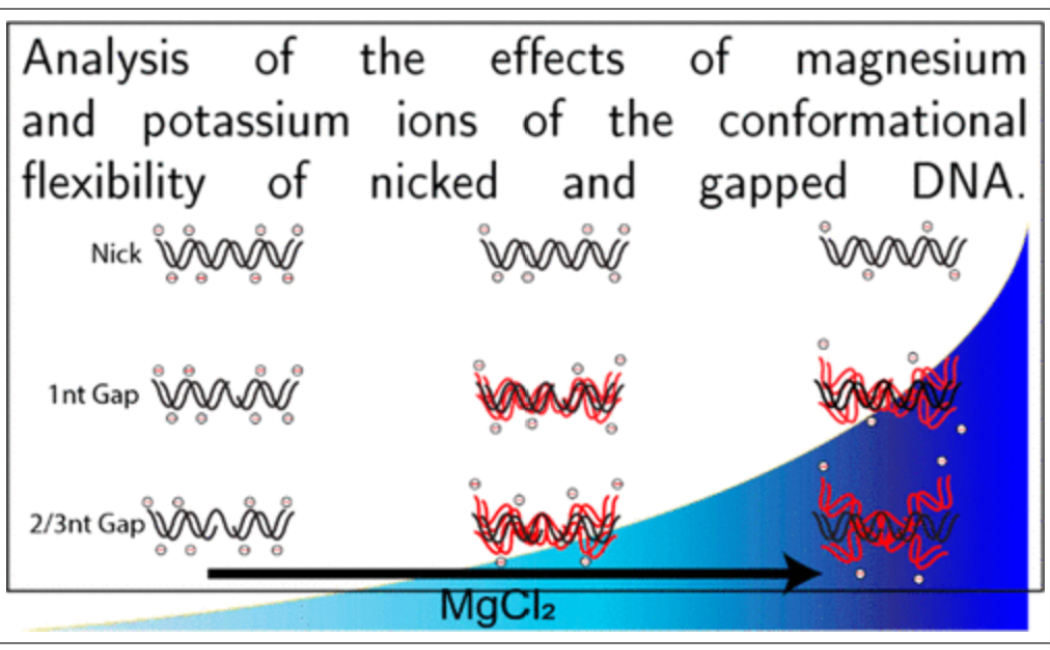
11 January, 2021
Paul D. Harris, Samir M. Hamdan, and Satoshi Habuchi
In duplex DNA, the continuous sugar phosphate back-bones prevent the double helix from significant bending, but breaks in theduplex such as nicks, gaps, andflaps present points at which significantbending is possible. The conformational dynamics of these aberrantstructures remains poorly understood. Two factors can maintain theduplexlike conformation of these aberrant structures, these being thehydrophobic and aromatic stacking interactions of the nucleobases, andthe electrostatic repulsion of the negatively charged backbones. Usingconfocal single-molecule Förster resonance energy transfer on nicked andgapped DNA structures, we compare the relative contributions of thesetwo factors by modulating the electrostatic repulsion through mono- anddivalent cation concentrations. Base stacking interactions dominate thedynamics of nicked DNA, making it behave essentially like duplex DNA.Gapped structures have weaker base stacking and thus backbone electrostatic repulsion becomes important, and shielding fromcations results in an average increase in bending around the gap. This bending of gapped structures could be interpreted by increasedflexibility of unstacked structures, transient unstacking events, or a combination of the two. Burst variance analysis (BVA) andanalysis by photon-by-photon hidden Markov modeling (H2MM), methods capable of detecting submillisecond dynamics of singlemolecules in solution, only revealed a single state, indicating that dynamics are occurring at time scales shorter than microseconds.
https://pubs.acs.org/doi/10.1021/acs.jpcb.0c06941?fig=agr1&ref=pdf